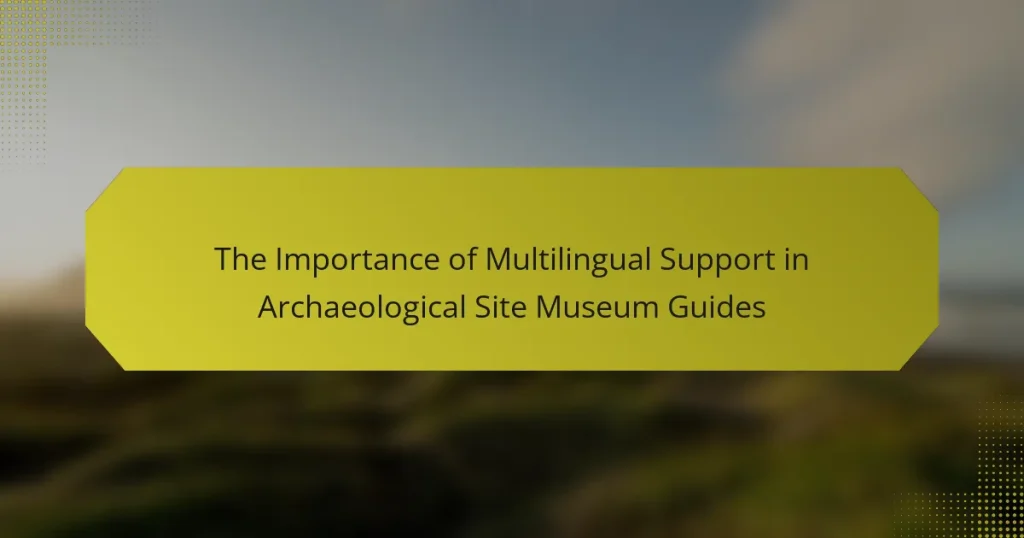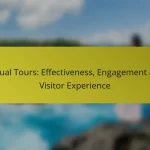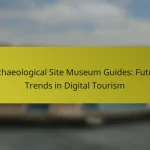Multilingual support in archaeological site museum guides is crucial for accommodating diverse visitors, allowing them to fully engage with and appreciate the exhibits. By offering information in various languages, museums can improve communication and create a more inclusive environment that fosters a deeper connection to cultural heritage.
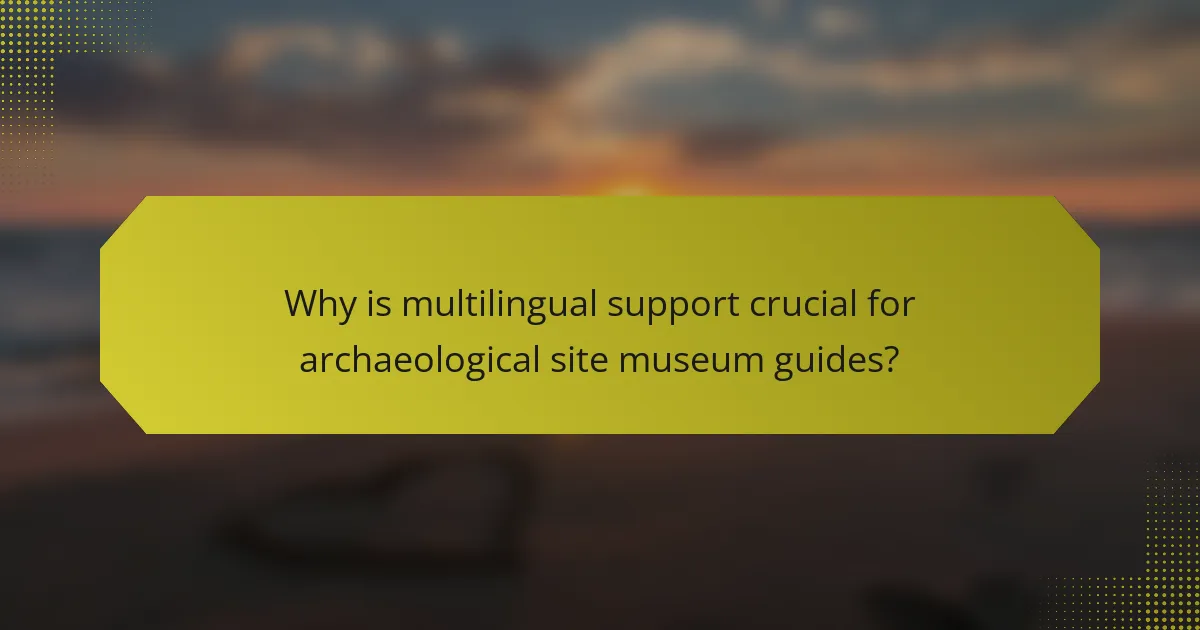
Why is multilingual support crucial for archaeological site museum guides?
Multilingual support is essential for archaeological site museum guides as it ensures that diverse visitors can fully understand and appreciate the exhibits. By providing information in multiple languages, museums can enhance communication and foster a deeper connection with their audience.
Enhances visitor experience
Offering guides in various languages significantly improves the overall visitor experience. When guests can read and comprehend the information presented, they are more likely to engage with the exhibits and enjoy their visit. This leads to positive reviews and repeat visits, which are vital for the museum’s success.
For instance, a site in a tourist-heavy area might provide guides in English, Spanish, and Mandarin to cater to the most common visitor demographics. This approach not only makes the site more welcoming but also encourages visitors to explore more thoroughly.
Increases accessibility
Multilingual support increases accessibility for non-native speakers and those with limited proficiency in the local language. By offering materials in multiple languages, museums can ensure that everyone, regardless of their linguistic background, can access the same information.
This is particularly important in regions with a high influx of international tourists. For example, a museum in Europe might provide guides in German, French, and Italian, making it easier for visitors from neighboring countries to engage with the site.
Boosts cultural engagement
Providing multilingual guides fosters cultural engagement by acknowledging and respecting the diverse backgrounds of visitors. When museums offer information in various languages, they demonstrate an understanding of the cultural significance of their exhibits to different communities.
This approach can lead to collaborative programs and events that celebrate cultural diversity, such as language-specific tours or workshops. By actively involving different linguistic groups, museums can create a richer, more inclusive environment that resonates with a wider audience.
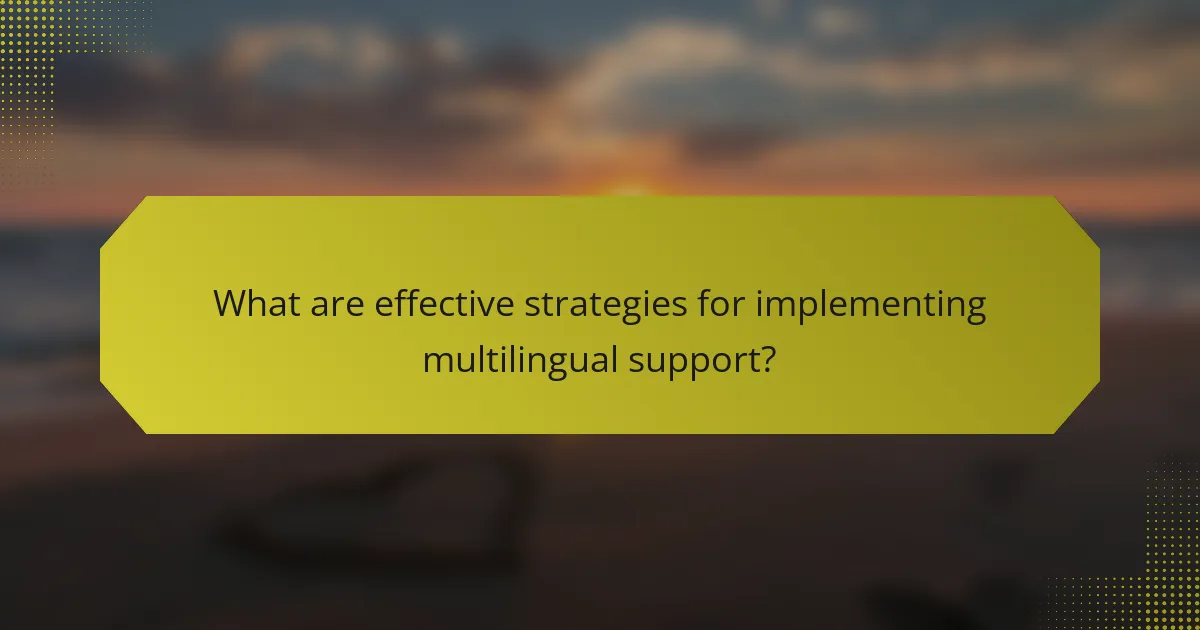
What are effective strategies for implementing multilingual support?
Effective strategies for implementing multilingual support in archaeological site museum guides include utilizing translation technology, hiring bilingual staff, and creating multilingual digital content. These approaches enhance accessibility and ensure that diverse audiences can engage with cultural heritage.
Utilizing translation technology
Translation technology, such as automated translation tools and apps, can streamline the process of providing multilingual support. These tools can quickly convert text into multiple languages, making information accessible to a wider audience.
However, it’s essential to review automated translations for accuracy and cultural relevance. Combining technology with human oversight can improve the quality of translations and ensure they resonate with local audiences.
Hiring bilingual staff
Employing bilingual staff is a direct way to enhance communication with visitors who speak different languages. Bilingual guides can provide personalized experiences, answer questions, and offer insights that automated systems may miss.
When hiring, consider the languages most commonly spoken by your visitors. For example, in regions with significant tourist traffic, staff fluent in English, Spanish, and local languages may be particularly beneficial.
Creating multilingual digital content
Developing multilingual digital content, such as websites and mobile applications, allows visitors to access information in their preferred language. This content can include virtual tours, educational resources, and interactive exhibits.
Ensure that digital content is regularly updated and easy to navigate. Providing language options prominently on your website or app can significantly enhance user experience and engagement.
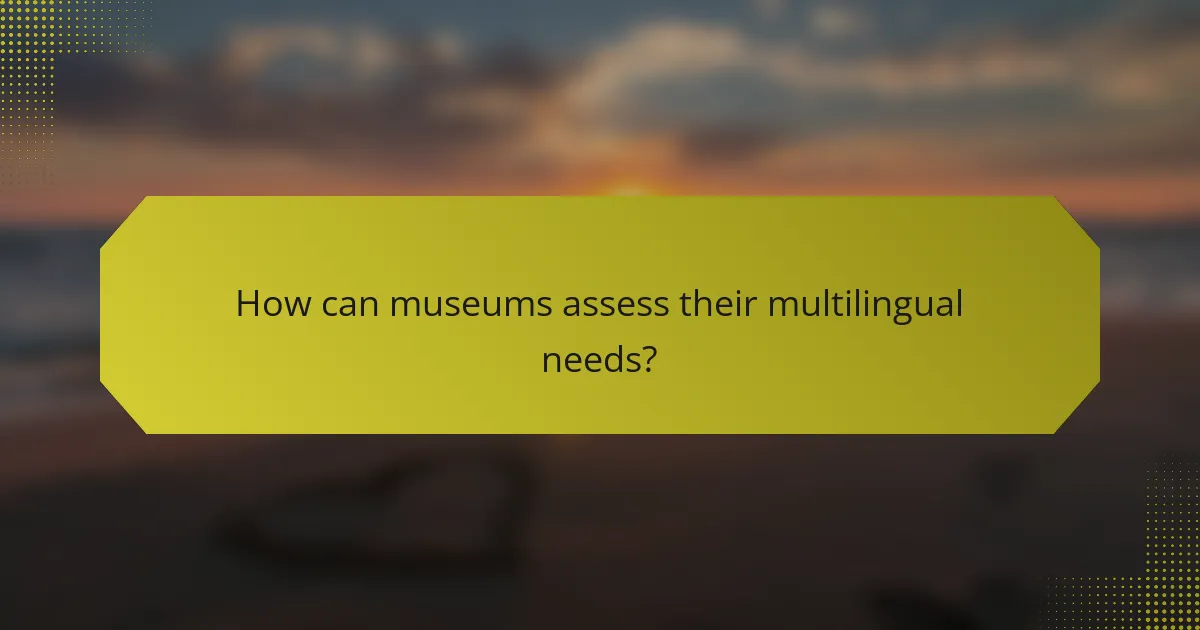
How can museums assess their multilingual needs?
Museums can assess their multilingual needs by analyzing visitor demographics and conducting surveys on language preferences. Understanding the linguistic backgrounds of visitors helps museums tailor their guides and resources effectively.
Analyzing visitor demographics
To analyze visitor demographics, museums should collect data on the languages spoken by their visitors. This can be achieved through ticket sales, visitor registration forms, or observational studies. For instance, if a significant portion of visitors speaks Spanish, offering materials in that language becomes a priority.
Additionally, museums can segment their audience by age, nationality, and purpose of visit. This segmentation can reveal trends, such as whether international tourists or local residents dominate the visitor base, influencing the languages needed for effective communication.
Conducting surveys on language preferences
Surveys are a direct way to gauge language preferences among visitors. Museums can distribute surveys online or at the entrance, asking visitors about their preferred language for informational materials. A simple question like “What language would you like to see our guides available in?” can yield valuable insights.
It’s beneficial to keep surveys concise and easy to complete, allowing for a mix of multiple-choice questions and open-ended responses. Analyzing this feedback can help museums prioritize which languages to support, ensuring that they meet the needs of their diverse audiences effectively.

What are the benefits of multilingual guides in major archaeological sites?
Multilingual guides in archaeological sites enhance the visitor experience by providing accessible information in various languages. This inclusivity fosters a deeper understanding of the site’s significance and cultural heritage.
Increased visitor satisfaction
When visitors can access information in their native language, their overall satisfaction increases significantly. Multilingual guides help eliminate language barriers, allowing guests to fully engage with the exhibits and narratives presented.
For example, a site offering guides in English, Spanish, and Mandarin can cater to a broader audience, ensuring that diverse groups feel welcomed and valued. This leads to positive reviews and repeat visits.
Higher attendance rates
Offering multilingual support can directly impact attendance rates at archaeological sites. By appealing to international tourists and local communities, sites can attract a larger and more diverse audience.
Research indicates that sites with multilingual guides often see attendance increases of 10-30%, as they become more accessible to non-native speakers. This can be particularly beneficial in regions with high tourist traffic, where inclusivity can set a site apart from competitors.
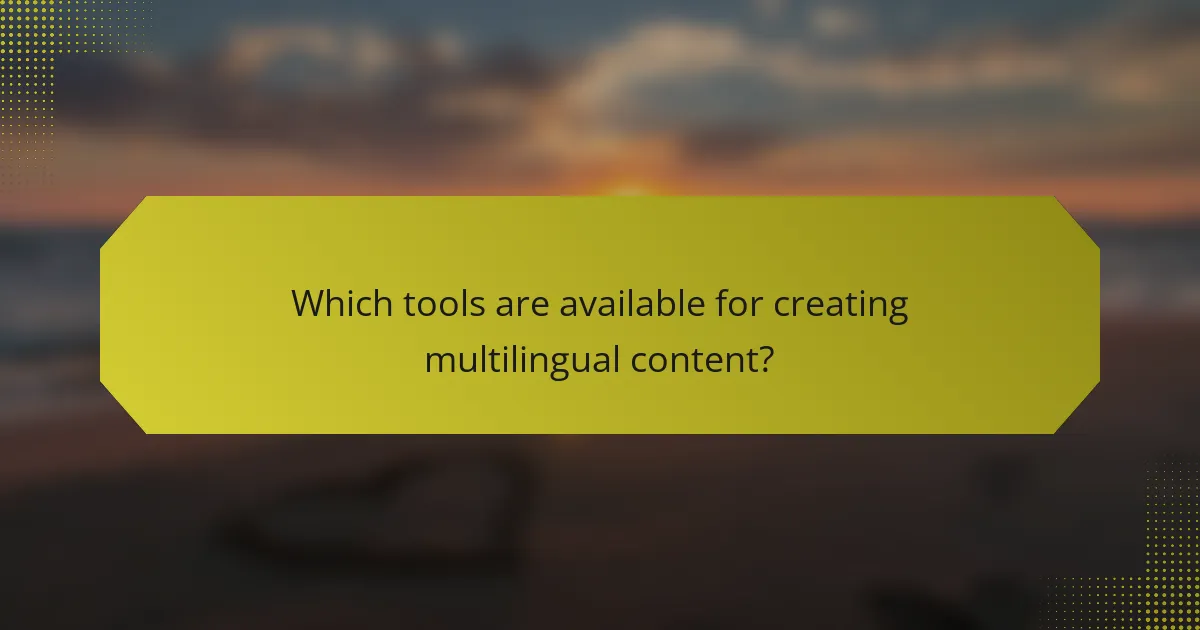
Which tools are available for creating multilingual content?
Several tools can assist in creating multilingual content for archaeological site museum guides, enhancing accessibility and engagement. These tools range from automated translation services to collaborative platforms that host multilingual resources.
Google Translate API
The Google Translate API is a powerful tool that allows developers to integrate translation capabilities into their applications. It supports numerous languages and can translate text, documents, and even websites, making it suitable for museum guides that require multilingual support.
When using the Google Translate API, consider the context and accuracy of translations, as automated translations may not always capture cultural nuances. It’s advisable to review translations by native speakers to ensure clarity and appropriateness.
Wikimedia Commons resources
Wikimedia Commons offers a wealth of multilingual resources, including images, videos, and audio files, that can enhance museum guides. These resources are often available in multiple languages, making it easier to provide diverse content for visitors.
Utilizing Wikimedia Commons can save time and costs associated with content creation. However, it’s essential to verify the licensing of each resource to ensure compliance with usage rights, especially in a public or commercial setting.
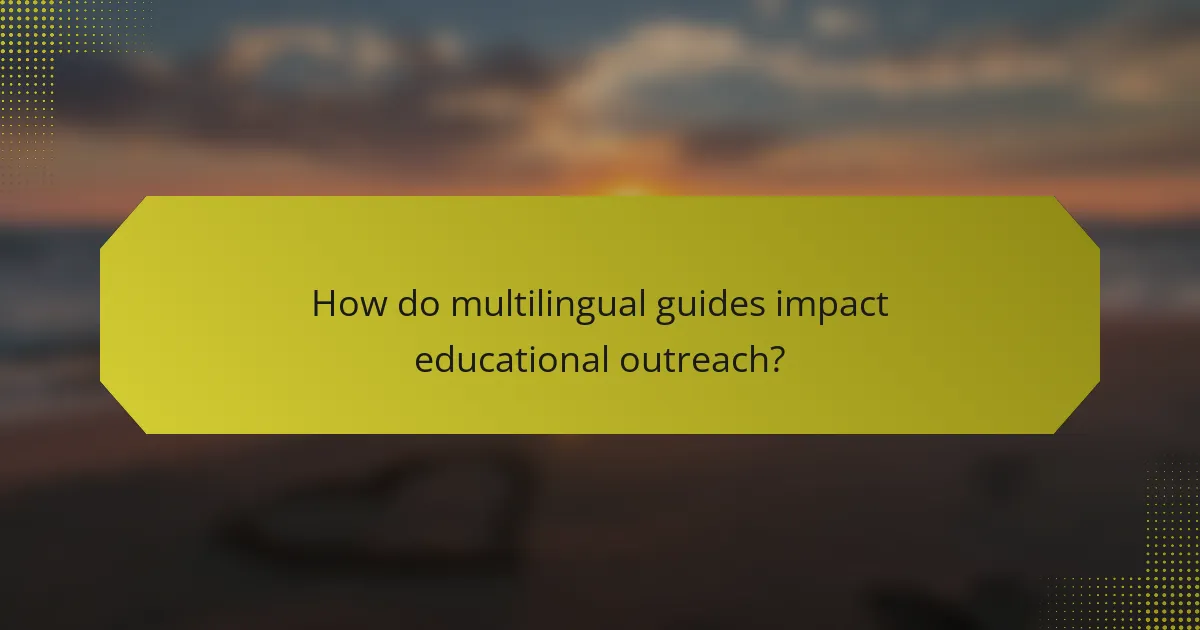
How do multilingual guides impact educational outreach?
Multilingual guides significantly enhance educational outreach by making archaeological site information accessible to a wider audience. By providing content in multiple languages, museums can engage visitors from diverse linguistic backgrounds, fostering a deeper understanding of cultural heritage.
Broader audience reach
Offering guides in various languages allows museums to attract visitors who may not speak the local language. This inclusivity can increase attendance, as individuals from different countries feel welcomed and valued. For instance, a site in Italy could provide guides in Italian, English, German, and Spanish, catering to popular tourist demographics.
Additionally, multilingual support can enhance online visibility. Museums that offer content in multiple languages are more likely to appear in search results for international visitors, driving traffic to their websites and increasing interest in their exhibitions.
Enhanced learning opportunities
Multilingual guides facilitate better comprehension of complex archaeological concepts and artifacts. When visitors can read information in their native language, they are more likely to engage with the material and retain knowledge. This can lead to more meaningful interactions during tours and educational programs.
Furthermore, providing translations allows museums to present diverse perspectives on history and culture. For example, a guide that includes indigenous languages can highlight local narratives, enriching the overall educational experience and promoting cultural appreciation among visitors.
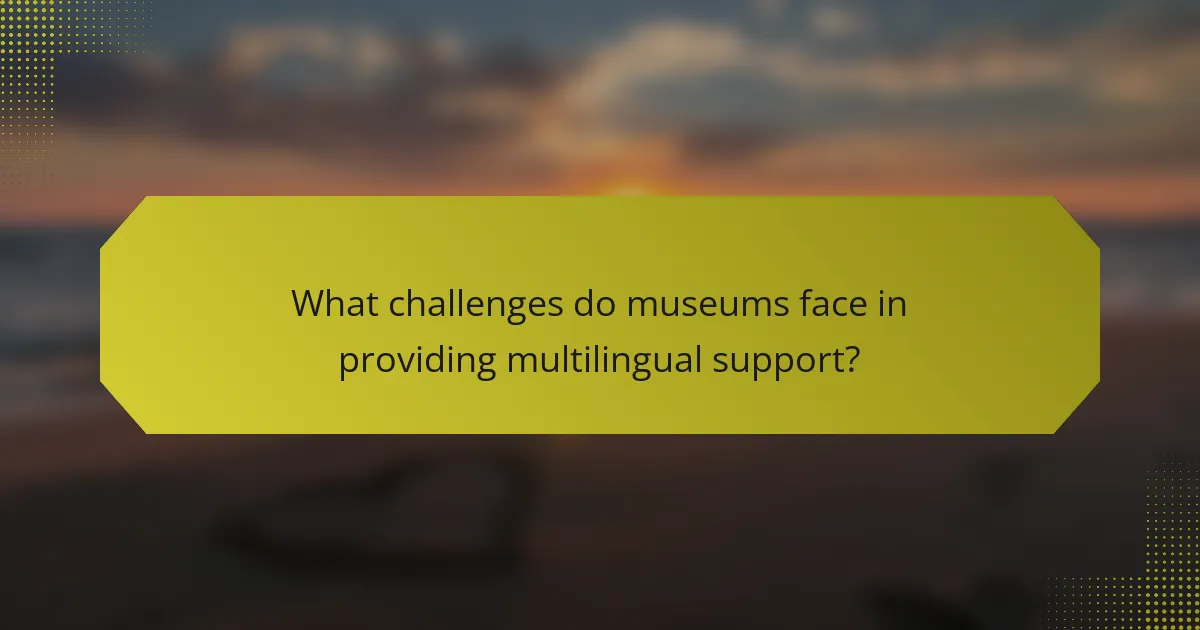
What challenges do museums face in providing multilingual support?
Museums often struggle with providing effective multilingual support due to limited resources, varying visitor demographics, and the complexity of translating specialized content. Ensuring that all visitors can access information in their preferred language requires careful planning and investment in translation services.
Resource Limitations
Many museums operate on tight budgets, making it difficult to allocate funds for multilingual support. Hiring professional translators or purchasing translation software can be costly, especially for smaller institutions. Museums may need to prioritize which languages to support based on visitor statistics and community needs.
Visitor Demographics
Understanding the linguistic diversity of visitors is crucial. Museums located in tourist-heavy areas may encounter a wide range of languages, while those in more localized settings might focus on a few key languages. Conducting surveys or analyzing ticket sales can help identify which languages are most relevant for the museum’s audience.
Complexity of Content
Translating museum content is not always straightforward due to the specialized terminology used in archaeology and history. Accurate translations require not only language proficiency but also subject matter expertise. Museums should consider collaborating with experts in both translation and the specific fields represented in their exhibits to ensure clarity and accuracy.
